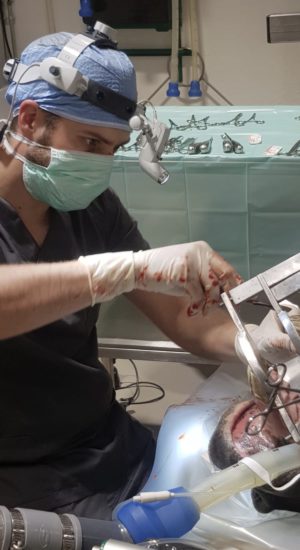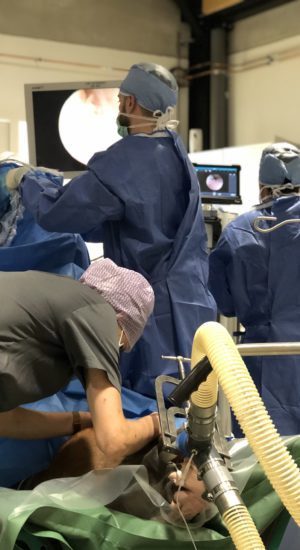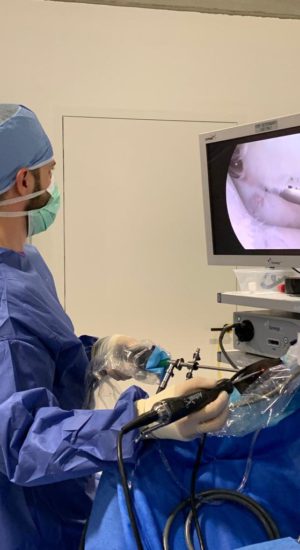Via Nova has 2 well-equipped operating theatres and 3 induction/recovery boxes with an assisted recovery system that reduce the risk of fractures when the horse gets up after anaesthesia. We use advanced anaesthetic equipment during the narcosis. After the induction, the horse is placed on the operating table with an electrical hoist and moved into the operating theatre. During the operation there is accurate monitoring of blood pressure, respiration, oxygen and carbon dioxide content, supplemented with ECG. In addition to surgery under general anaesthesia, standing operations under mild sedation are also carried out.
Surgery performed includes arthroscopy/tenoscopy (keyhole surgery of joint or tendon sheath), laparoscopy (keyhole surgery of the abdomen), bone fractures and bone surgery, standing corrections, airway surgery, tumours, eye operations, castrations and surgery of the reproductive organs.
The horse is generally brought in 1 day before the operation. The horse must then fast during the night so that it has an empty stomach when undergoing general anaesthesia. Depending on the type of surgery, the horse may go home again the next day or several days after the operation. Both the owner and the referring veterinarian are informed of the surgery and progress of the recovery. When the horse goes home, you will receive a surgery report and a letter with instructions for the aftercare.
Uiteraard zijn wij altijd beschikbaar voor vragen van doorsturende dierenartsen en eigenaren. Wij kunnen de chirurgische mogelijkheden uitleggen, wat u kunt verwachten voor, tijdens en na de operatie. Hiermee kunt u vervolgens de beste beslissing voor uw paard maken. Voor vragen in verband met chirurgie kan u steeds terecht op het mailadres surgery@vianovaequine.com. Vergeet zeker niet je telefoonnummer te vermelden.
During your horse’s stay in our clinic, the animal is entrusted to the expert care and supervision of our team and we will do everything in our power to make your horse feel comfortable.
Arthroscopy/ Tenoscopy
Very small skin incisions are made in order to insert camera and instruments for examination of the joint/tendon sheath. OCD fragments can then be removed, tendon injuries can be cleaned and any infection in the joint or tendon sheath can be flushed out. In addition, this technique can also be used as an additional diagnostic tool in a lameness examination.
Laparoscopy
For this we use the same minimally invasive technique as with the arthroscopy, but here we look into the abdominal cavity. This is generally performed with the horse standing and mildly sedated. Using this method, we can remove undescended testicles (abdominal cryptorchidism) and ovaries from the abdominal cavity, close the space between nephrosplenic ligament and spleen and close inguinal rings after a hernia. A laparoscopy can also be used as a diagnostic tool.




